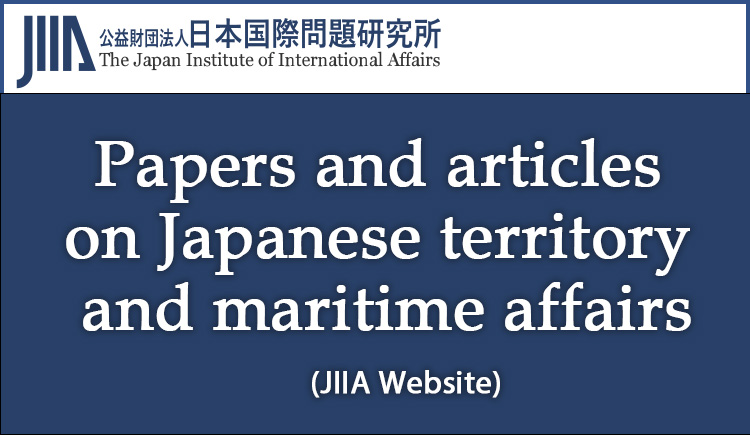The documents and materials published on this website were collected, researched, and prepared with advice from experts, as a part of a Government-commissioned project. The contents of this website do not reflect the views of the Government.
The South China Sea and East China Sea
4. Development of International Law on MD through Precedents of International Courts and Tribunals
(1) Agreements on MD
Articles 74(1) and 83(1) of UNCLOS stipulate that MD may be effected primarily by agreement between the parties, emphasizing respect for such settlements and if no settlement can be reached, the States may resort to international adjudication. The existence of MD agreements has also been a key issue in several international court cases.
In the cases of Cameroon v. Nigeria, Romania v. Ukraine, and Peru v. Chile, the ICJ recognized that an agreement existed between the parties concerning MD up to a certain distance from the coast.37 Conversely, in the cases of Nicaragua v. Honduras, Bangladesh v. Myanmar, and Ghana/Côte d'Ivoire, the Court found no such agreement.38
(2) Three-Stage Approach of the E/RC Method
The accumulation of precedents in which the E/RC method has been adopted to “achieve an equitable solution" has led to the formulation of a structured and sophisticated approach to its application. In particular, the ICJ Judgment in the Black Sea case played a significant role in this development. In that case, the ICJ reviewed precedents and concluded that the E/RC method constitutes the general approach to MD. The ICJ further stated that the E/RC method involves a three stage approach: 1) determining a provisional equidistant or median line, 2) adjusting or shifting this provisional line based on an examination of relevant circumstances, and 3) verifying that the resulting delimitation achieves an equitable solution.39
Prior to the first stage, the coastlines of the party are identified as the basis for determining the equidistant or median line and one of the factors to be considered as relevant circumstances in the second stage, and the maritime area subject to delimitation is also identified.40
In the second stage, priority is typically given to geographical factors, such as differences in coastline length between the parties,41 coastal topography, and the cut-off effect, which restricts a coastal state's access to the sea.42 Although disputing parties have frequently took up other factors—such as the location of resource deposits and the exercise of authority by the coastal state, including resource utilization and patrol activities—the acceptance of such arguments has been limited. There are few precedents in which these non-geographical factors have been admitted as the relevant circumstances in MD cases.43 The Special Chamber of the ITLOS noted that “international courts and tribunals have been consistent in their reluctance to consider oil concessions and oil activities as relevant circumstances justifying the adjustment of the provisional delimitation line,”44
Note 37
Cameroon v. Nigeria, supra note 15, pp. 441-442, para. 287-289, Black Sea, supra note 19, pp. 82-89, paras. 55-76, and Maritime Dispute (Peru v. Chile), Judgment, I.C.J. Reports 2014, pp. 57-58, paras. 149-151.
Note 38
Nicaragua v. Honduras, supra note 15, p 737, para. 258, Bangladesh v. Myanmar, supra note 29, paras. 98 and 118, and Ghana/Côte D’Ivoire, supra note 37, para. 228.
Note 39
Black Sea, supra note 19, pp. 101-103, paras. 115-122. In the following cases, the Judgment of the Black Sea case is explicitly referred to: Nicaragua v. Colombia, supra note 15, pp. 695-696, paras. 190-193, Peru v. Chile, supra note 38, p. 65, para. 180, Bangladesh v. India, supra note 29, paras. 336-346, Ghana/Côte D’Ivoire, supra note 37, paras. 360, Costa Rica v. Nicaragua, supra note 15, pp. 190-203, paras. 135-166 and pp. 176-224, paras. 208-204, and Delimitation of the Maritime Boundary between Mauritius and Maldives in the Indian Ocean (Mauritius/Maldives), Judgment, 28 April 2023, paras. 95-98.
Note 40
Cameroon v. Nigeria, supra note 15, pp. 443-444, para. 291, Black Sea, supra note 19, p. 93, para. 88, pp. 96-98, paras. 98-105, and pp. 99-100, paras. 110-114, Bangladesh v. Myanmar, supra note 29, paras. 185-205, Nicaragua v. Colombia, supra note 15, pp. 675-686, paras. 143-166, Somalia v. Kenya, supra note 30, pp. 252-257, paras. 132-141, Costa Rica v. Nicaragua, supra note 15, pp. 181-187, paras. 108-122 and pp. 210-214, paras. 179-185, Ghana/Côte D’Ivoire, supra note 37, paras. 361-386, and Mauritius/Maldives, supra note 40, paras. 108-111.
Note 41
Cameroon v. Nigeria, supra note 15, pp. 446-447, para. 301, Black Sea, supra note 19, pp. 116-118, paras. 163-168, and Nicaragua v. Colombia, supra note 15, p. 702, paras. 209-211.
Note 42
Cameroon v. Nigeria, supra note 15, pp. 442-443, para. 291, Black Sea, supra note 19, pp. 119-120, paras. 174-178, pp. 122-123, paras. 185-188, and p. 127, para. 201, Bangladesh v. Myanmar, supra note 29, paras. 290-297, 316-319, 322, and, Nicaragua v. Colombia, supra note 15, pp. 703-704, paras. 214-216, Bangladesh v. India, supra note 29, paras. 399-421, and 437, Somalia v. Kenya, supra note 308, pp. 264-270, paras. 161-174, Costa Rica v. Nicaragua, supra note 15, pp. 196-198, paras. 153-158, and pp. 218-221, paras. 192-201, Ghana/Côte D’Ivoire, supra note 37, paras. 421-426 and paras. 434-436, and Mauritius/Maldives, supra note 40, paras. 243-247.
Note 43
Since the turn of the century, international courts and tribunals have not admitted the arguments of the parties concerning their activities as relevant circumstances. In the Nicaragua v. Colombia case, the ICJ considered the parties’ arguments regarding their conduct int eh relevant maritime areas (regulation of fishing activities, scientific exploration and naval patrols), security and law enforcement considerations, and equitable access to natural resources, but decided to bear in mind only security and law enforcement considerations (Nicaragua v. Colombia, supra note 15, pp. 704–706, paras. 217–223). In all other cases, oil resources and fisheries have not been recognized as relevant circumstances, see Cameroon v. Nigeria, supra note 15, pp. 442–443, para. 291, and pp. 447–448, para. 304; Qatar v. Bahrain, supra note 27, pp. 109–110, paras. 222–223, pp. 112–113, para. 236, and pp. 114–115, paras. 247–249; Black Sea, supra note 19, pp. 125–126, paras. 197–198, and p. 128, para. 204; Bangladesh v. India, supra note 29, paras. 422–424; ; Ghana/Côte d'Ivoire, supra note 37, paras. 450–455, and paras. 467–479, and Somalia v. Kenya, supra note 30, pp. 262- 264, paras. 154-160.
Note 44
Ibid., para. 476.
5. MD of CS beyond 200 Nautical Miles before International Courts and Tribunals
(1) System of CS Extension under Article 76 of UNCLOS
When a coastal state submits information on CS limits beyond 200 nautical miles to the CLCS under Article 76 of UNCLOS, other states may express their positions In such cases, since the CLCS is composed of scientists and does not have the competence to adjudicate issues concerning the interpretation or application of UNCLOS, it does not take action until the matters concerned have been settled.
For example, in response to Japan’s submission of information on the CS beyond 200 nautical miles, China and South Korea expressed their positions. Consequently, in its 2012 recommendation, the CLCS decided not to take action until the matters referred to in the note verbales of China and South Korea have been settled.45
(2) MD of CS beyond 200 Nautical Miles before International Courts and Tribunals
MD is required for CS areas extending beyond 200 nautical miles when the entitlements of more than two coastal states overlap. The ICJ has generally not been proactive in addressing requests for MD of CS beyond 200 nautical miles,46 and the Bangladesh v. Myanmar case was the first precedent to address such an issue. Although the judgment was rendered before the CLCS made its recommendation, the ITLOS ruled that determining entitlement to a continental shelf is distinct from determining its outer limits and held that MD of CS beyond 200 nautical miles can be adjudicated when the entitlements of more than two coastal states overlap. In this case, the question of entitlement to CS beyond 200 nautical miles was primarily a legal issue, and the ITLOS recognized the existence and overlap of both parties’ entitlements,47 subsequently determining MD based on the E/RC method.48
In the Bangladesh v. India case,the Arbitral Tribunal also applied the E/RC method for MD.49 In the cases of the Somalia v. Kenya and Ghana/Côte d'Ivoire, the ICJ and the Special Chamber of the ITLOS respectively held that the boundary of the CS beyond 200 nautical miles was an extension of the EEZ and CS SMB within 200 nautical miles, and that the outer limits shall be determined based on the CLCS recommendation.50 It is possible to point out that in cases concerning MD of CS beyond 200 nautical miles, international courts have consistently emphasized the coherency with the MD within 200 nautical miles and applied the E/RC method.
In the Mauritius/Maldives case, Mauritius requested the Special Chamber of the ITLOS to determine the MD of CS beyond 200 nautical miles. Two aspects of the judgment in this case are particularly noteworthy.
The first concerns the treatment of MD in cases where one state’s entitlement to CS beyond 200 nautical miles overlaps with another state’s entitlement to CS within 200 nautical miles. The Special Chamber held that the MD of CS and EEZ within 200 nautical miles rendered the issue of overlap between one state’s entitlement to CS beyond 200 nautical miles and another state’s entitlement to CS within 200 nautical miles moot.51 In that context it may also be noted that in the Nicaragua v. Colombia case, concerning CS delimitation beyond 200 nautical miles, the ICJ ruled that under customary international law, a state cannot claim entitlement to a CS beyond 200 nautical miles in areas overlapping with another state’s EEZ within 200 nautical miles which is decided by the Special Chamber in this judgment.52
The second key point is that the Special Chamber declined to determine MD due to "significant uncertainty" regarding the entitlements of Mauritius to CS beyond 200 nautical miles while there was no difference of view concerning that of Maldives.53 The Special Chamber stated that the criterion of "significant uncertainty" was applied to minimize the risk of inconsistency between its ruling and any subsequent CLCS recommendation regarding entitlement to CS beyond 200 nautical miles.54 Additionally, it was noted that “in maritime delimitation cases, international courts and tribunals refrain from delimiting areas where the rights of other coastal States may be affected.” Furthermore, the application of the "significant uncertainty" criterion was considered to be in the interest of the international community, particularly regarding the deep seabed, which is regarded as the common heritage of humankind. The Special Chamber emphasized that “the exercise of caution is called for in the circumstances of the present case, where there may be a risk of prejudice to the interests of the international community in the Area and the common heritage principle.”55
(3) Gray Area
In the Bangladesh v. Myanmar case, during the delimitation of the CS beyond 200 nautical miles, the ICJ determined that the area where Bangladesh’s CS beyond 200 nautical miles overlaps with Myanmar’s EEZ constitutes a “gray area.” The Court concluded that in such areas, MD must be exercised with due regard for each state’s rights and obligations, in accordance with the relevant provisions of UNCLOS, and that bilateral agreements could be used to establish settlement and cooperation mechanisms.56 A similar determination was made in the Bangladesh v. India case.57
In the Somalia v. Kenya case, where no delimitation was made for the CS beyond 200 nautical miles, the Court noted that a gray area would arise if such a boundary were determined in the future.58
The principal issues in the precedents concerning the MD of the CS beyond 200 nautical miles reflect the limits of the competence of international courts and tribunals for the purposes of that MD before the recommendation of the CLCS.
Note 45
Commission on the Limits of the Continental Shelf, Summary of Recommendations of the Commission on the Limits of the Continental Shelf in Regard to the Submission Made by Japan on 12 November 2008, 19 April 2012.
Note 46
Kawano, supra note 22, p. 24.
Note 47
Bangladesh v. Myanmar, supra note 29, paras. 397-449.
Note 48
Ibid., paras. 461-462.
Note 49
Bangladesh v. India, supra note 29, paras. 456-497.
Note 50
Somalia v. Kenya, supra note 30, pp. 276-277, paras. 194-196, and Ghana/Côte D’Ivoire, supra note 37, para. 527.
Note 51
Mauritius/Maldives, supra note 40, paras 274-275.
Note 52
Question of the Delimitation of the Continental Shelf between Nicaragua and Colombia beyond 200 Nautical Miles from the Nicaraguan Coast (Nicaragua v. Colombia), Judgment 13 July 2023, paras. 69-79.
Note 53
Mauritius/Maldives, supra note 40, paras. 434-451 and para. 466(4).
Note 54
Ibid., para. 433.
Note 55
Ibid., paras. 452- 453.
Note 56
Bangladesh v. Myanmar, supra note 29, paras. 463-464, and 471-476.
Note 57
Bangladesh v. India, supra note 29, paras. 503-508.
Note 58
Somalia v. Kenya, supra note 30, para. 197.
Conclusion
An examination of cases in which MD disputes have been referred to international courts and tribunals leads to the conclusion that, since the adoption of UNCLOS, they have tried to formulate the rules and method for the achievement of an equitable solution set out by UNCLOS and that the practical application of the single maritime boundary (SMB) method has frequently been required for the delimitation of TS, EEZs and CS. Furthermore, unless exceptional circumstances exist, MD based on the /RC method, including the delimitation of CS beyond 200 nautical miles, has become an established practice except the cases with very exceptional circumstances and has influenced the formulation of the rules and method of MD.
Additionally, in many cases, geographical factors, such as coastline length and shape, have been considered principal relevant circumstances, while factors such as economic activities related to resource utilization and law enforcement actions have been less frequently taken into account. By considering these factors, international courts and tribunals may achieve an equitable solution from an objective viewpoint. Given that international courts and tribunals are expected to adjudicate disputes with a focus on achieving equitable outcomes in accordance with international law, it can be said that they have prioritized factors that can be assessed objectively, even when considering relevant circumstances.
Senkaku Islands
Research and Commentary Site
- I Comprehensive issues
- II Commentary on themes by historical period
- III Analysis of claims by other countries
- IV The South China Sea and East China Sea





